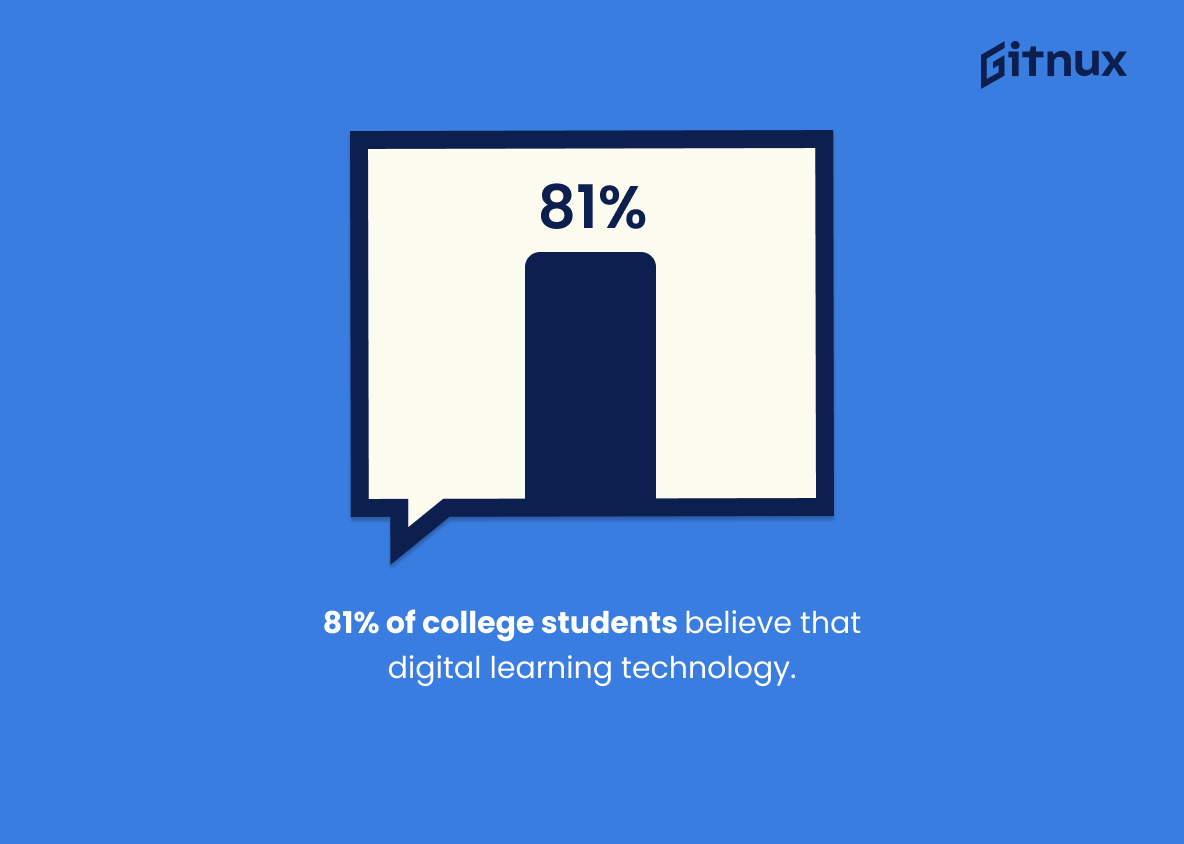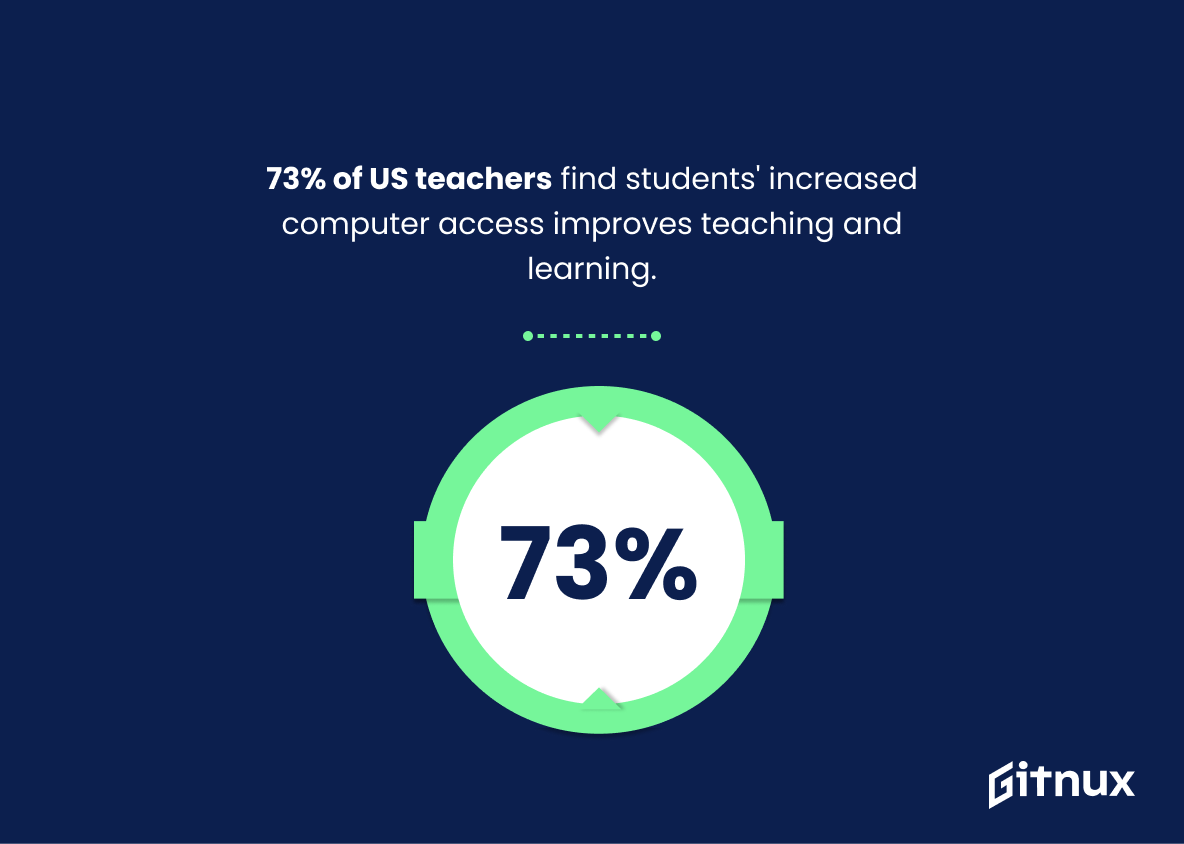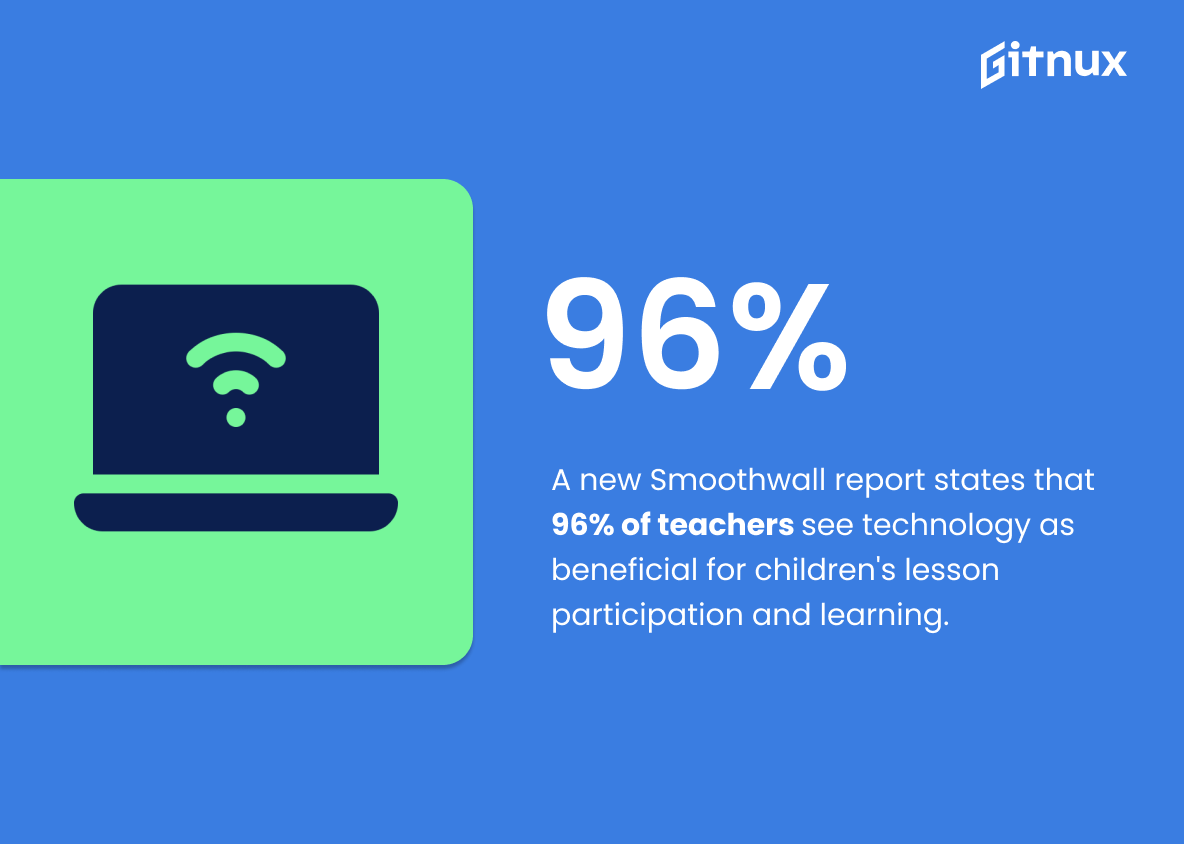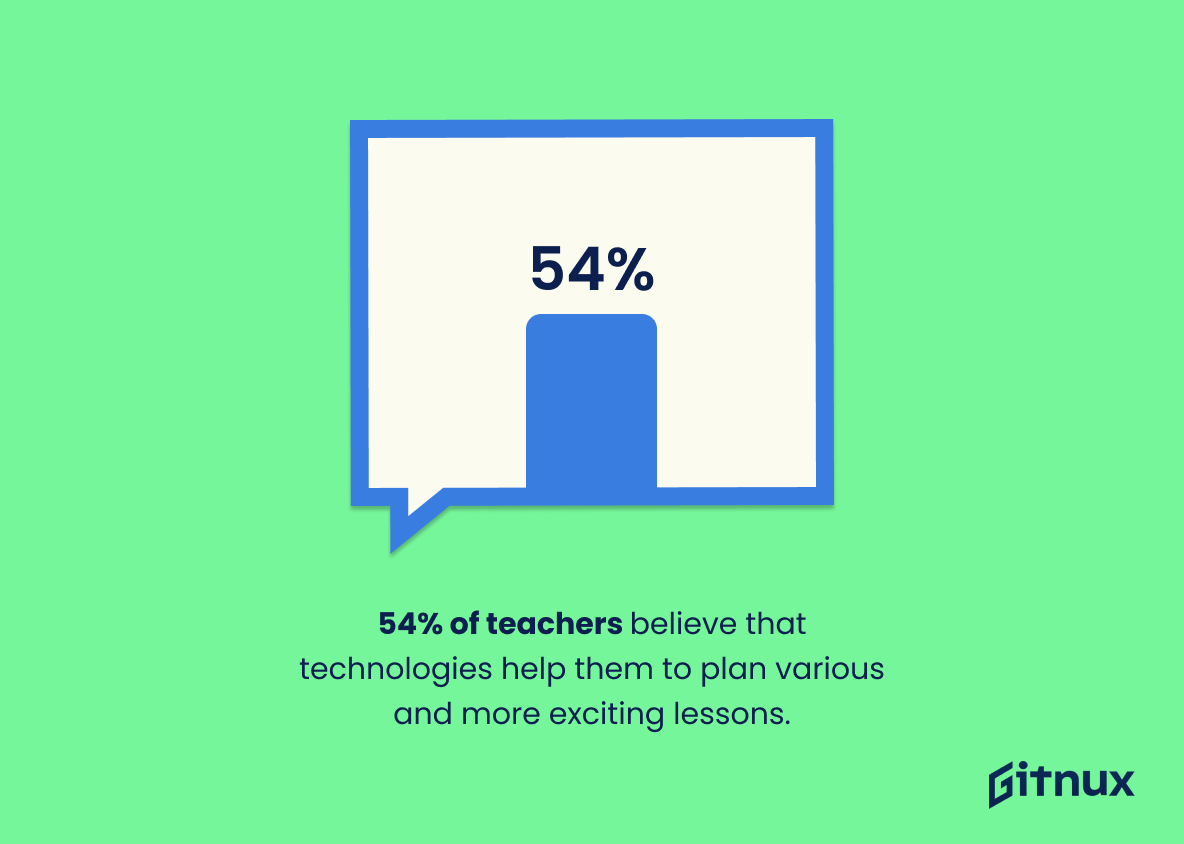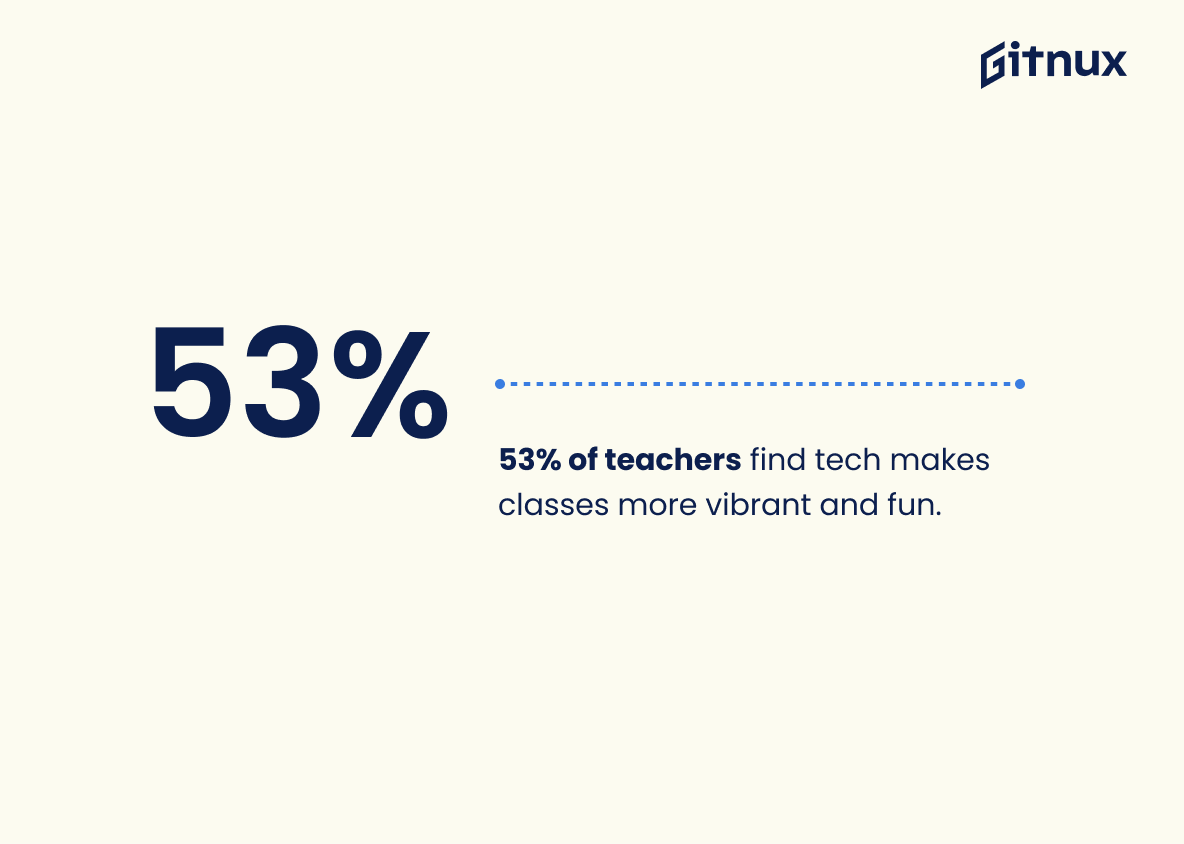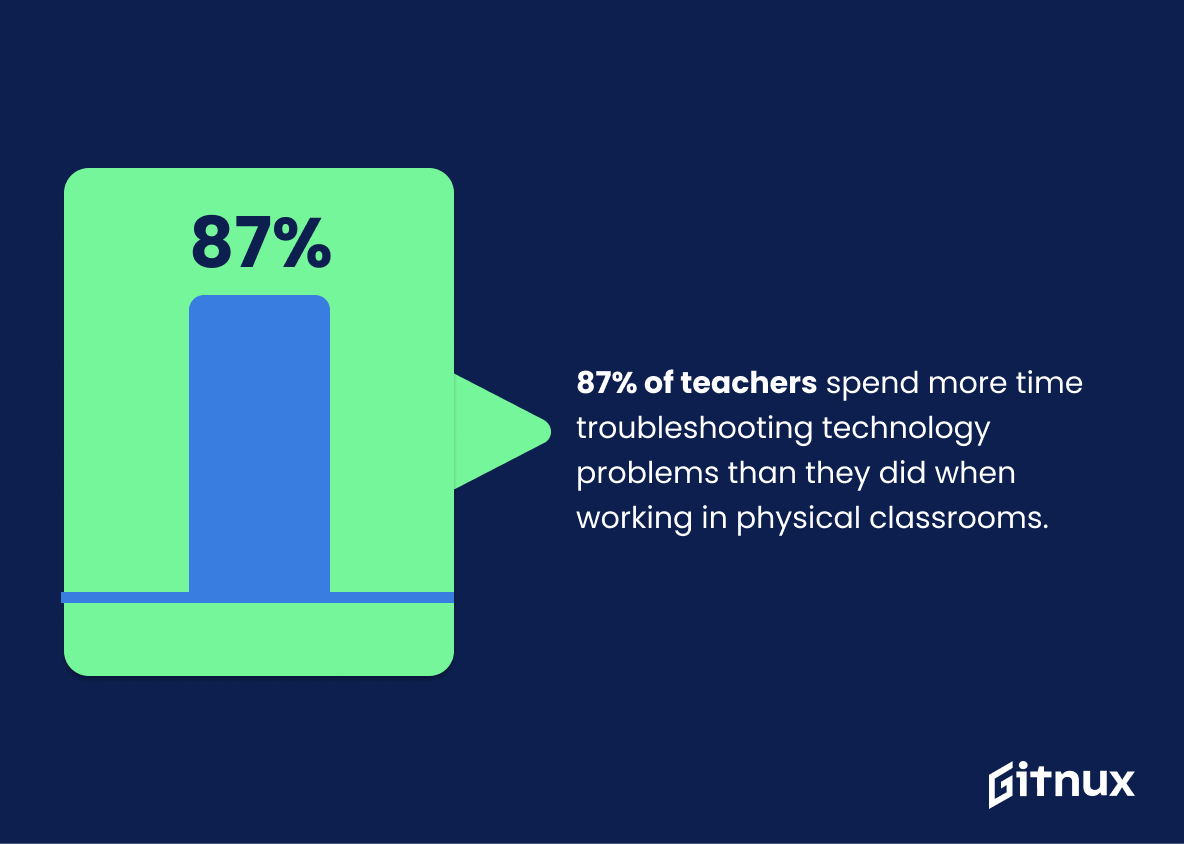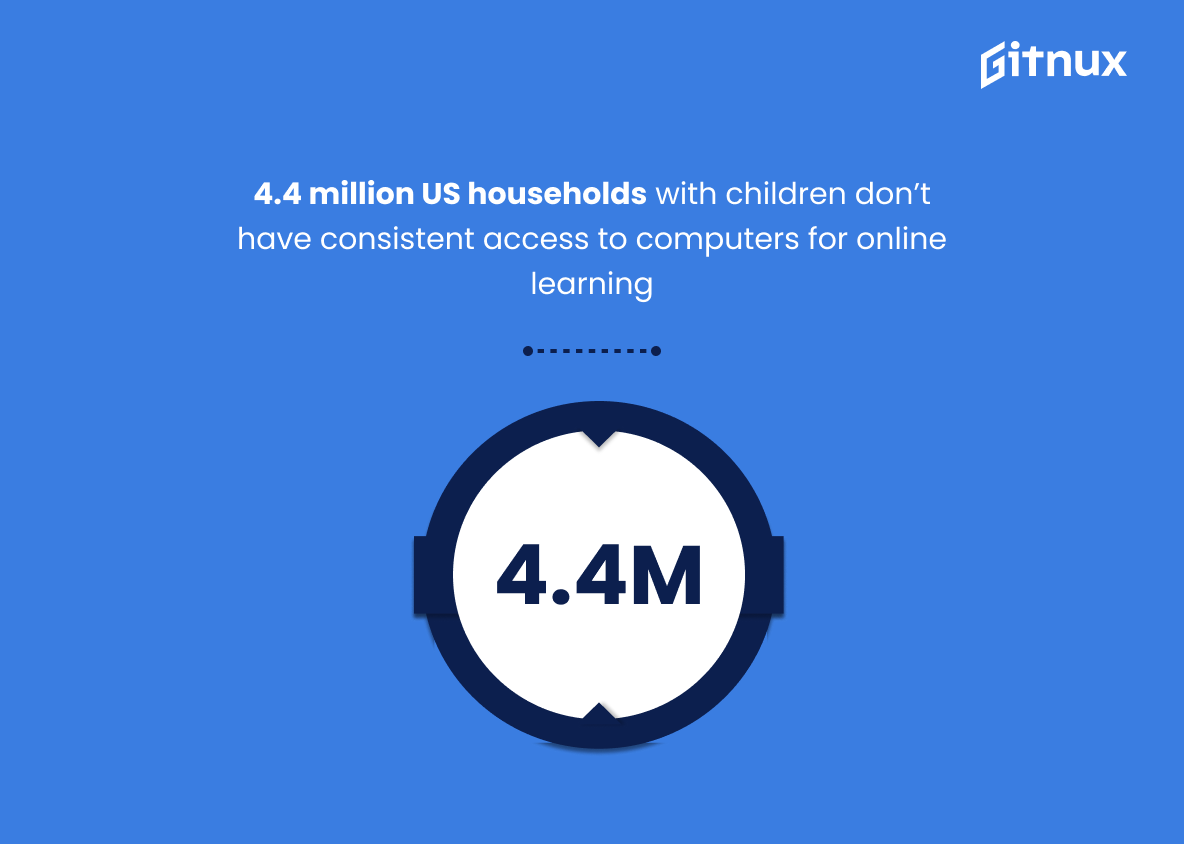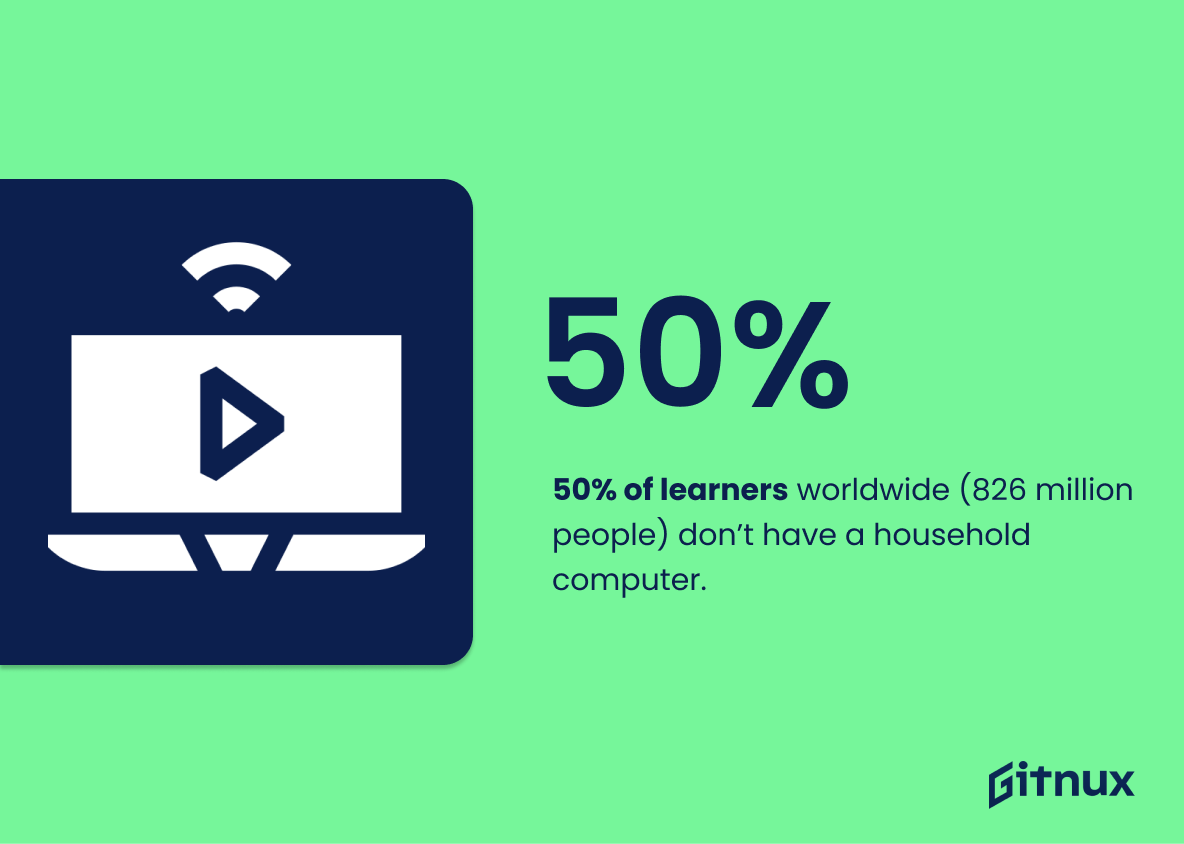It’s hard to imagine our daily life without technology. We use it every single day for work, communication, and even for learning something new. The digital form of education is getting more and more popular worldwide because it brings lots of benefits with it.
Education technologies (further EdTech) in school combine the learning process with gamification and help kids to stay concentrated longer without losing interest. Higher education also benefits from EdTech implementation. Students have more time to learn and research new information outside of classroom hours and work more efficiently. Online employee training is also getting more popular in the work industry, as it has proved to be less time- and money-consuming.
Technology definitely brings lots of advantages to the education system, but not everything about it is so positive. EdTech also brings lots of challenges to the table, and we are about to discover them right now. So, if you are interested in the latest technology in education statistics, this article is just what you need!
Technology In Education: The Most Important Statistics
- EdTech market size was valued at USD 254.80 billion in 2021 and is expected to reach USD 605.40 billion by 2027.
- The global corporate EdTech is a 22.5 billion USD industry.
- Every dollar spent on E-Learning for employees improves productivity by 30 USD. In other words, companies get a 30x investment return when training their staff online.
General EdTech stats
Research and Markets have recently revealed, that EdTech market size was valued at USD 254.80 billion in 2021 and is expected to reach USD 605.40 billion by 2027.
According to Statista research, 81% of college students believe that digital learning technology, including virtual classroom chat, helps them boost their grades
E-learning is the fastest-growing sector of the education industry, up 900% since 2000.
Benefits of Edtech
A new IJCS research discovered, that gamification can improve educational outcomes by 45.45%. And the results are even better when it is combined with reading, as improvement gets as high as 60.67%.
The majority of US teachers (73%) reported that students’ increased access to individual computers makes the teaching and learning process easier.
According to a new Smoothwall report, 96% of teachers believe technology has a positive impact on children’s lesson participation and learning. 56% of respondents believe that the use of technology makes students noticeably more engaged.
49% of teachers feel more efficient at planning and giving lessons with technology. 54% of teachers believe that technologies help them to plan various and more exciting lessons.
53% of the teachers surveyed by Smoothwall said that technologies make their classrooms more vibrant and fun.
Challenges of using EdTech
One of the biggest challenges in EdTech is access to the internet and the availability of tech devices. According to EdWeek report, more than a quarter of US homes don’t have broadband internet service. It is a big problem in rural areas, where broadband internet service is spotty, expensive, or nonexistent. Technology access was a major challenge for many teachers and students during extended school shutdowns, caused by Covid-19 pandemic.
While working remotely, 87% of teachers spend more time troubleshooting technology problems than they did when working in physical classrooms. As a result, teachers spend less time with students, which is an obvious downside.
4.4 million US households with children don’t have consistent access to computers for online learning
The global picture is even worse. According to a UNESCO report, 50% of learners worldwide (826 million people) don’t have a household computer. 43% of learners (706 million) don’t have household Internet.
Another issue with using technologies in education is the lack of teachers trained to teach their students online. The majority of teachers require additional support in online teaching. In low-income countries, there is only 1 trained teacher for 56 students in primary education.
A significant drop in reaching educational goals in the US during the pandemic was reported by NWEA, which checked the data from 5 million students in grades 3-8. As a result of schools shutdown and switching to online learning, US students have achieved only 70% of reading gains and 50% of math gains compared to what they would typically learn in the classroom during the school year. The research has also found that students from low-income families, who are more likely to have issues with internet access, were disproportionally hurt by the transition to online education.
Another problem with using technology for studying at home in younger groups of students is the importance of parenting guidance. Teachers struggle to deliver personalized instructions to students in virtual settings, and this responsibility falls on parents, who may not be up to the task. Schools ask parents to help their children with learning, and that becomes an issue for many families due to work shifts, timing, internet access, etc.
The virtual environment also restricts children’s ability to interact and socialize, which is crucial for developing emotional and social intelligence and strengthening their ability to learn.
School EdTech Stats
One of the biggest difficulties with technology in school education is the lack of digital learning devices. At the start of 2020, just before the start of the Covid-19 pandemic, EdWeek surveyed US teachers on the availability of devices for every student. And the results were not that positive, only 57% of surveyed said each student in their schools had a learning device.
School game-based learning is on the rise right now and is expected to grow by USD 9.03 billion from 2020 to 2025, according to Technavio report. 37% of the market’s growth will originate from US and Canada.
According to Learn Platform information, the use of digital devices in schools has increased by 99% since 2020.
58% of school teachers say their opinion of technologies in education has improved since the start of the pandemic
Another research revealed, that the use of technologies in the classroom is correlated with nearly a grade better performance on the PISA assessment (Program for International Student Assessment) among 15-years-old students.
On the other hand, students who use laptops and tablets in the classroom have worse results than those who do not. Laptops’ impact varies by subject and is more significant for math scores. Students, who use tablets in the classroom, perform a half-grade level worse results in every subject.
According to the same study, the intensity of tech use also plays an important role in students’ educational performance. Students who either avoid technology altogether or use it intensely are doing better, than those in the middle flailing.
71% of US students are able to use laptops in the classroom, compared with an average of 37% worldwide.
Edtech and higher education
Technology plays a crucial role in college education, and lots of research and studies prove it.
McGraw Hill surveyed 3,300 US college students, and the vast majority of them strongly agreed that technologies are most helpful in their education. 81% of students feel that digital technologies improve their grades and efficiency. 82% of respondents confirmed that tech devices allow them to spend more time studying through increased accessibility.
Students believe that technology increases their engagement with course materials (71%), professors (58%), and the college community (51%). 85% of respondents also feel that using technology in the classroom and for home study has helped them to become better job candidates.
86% of e-learning graduates think their courses were a good investment and the cost of it was worth the value provided. Most of them not only get the value back, but even get more out of it than they paid.
74% of online college students want mobile access to their course materials, according to a report, published by Wiley. Students want to use their mobile devices on the go, to help them progress through their courses no matter where they are.
Corporate EdTech stats
According to Valuates Reports, the global corporate EdTech industry right now is valued at 22.5 billion USD, and it’s going to reach USD 44.6 billion USD by 2028. By using technologies, companies upskill their teams in less time and for less money.
Companies annually spend an average of 1,308 USD per employee on employee training. Teams appreciate these significant investments, but switching to EdTech could reduce these expenses and make the learning process more effective and efficient.
Every dollar spent on E-Learning for employees improves productivity by 30 USD. In other words, companies get a 30x investment return when training their staff online.
Employees always feel happier in a workplace, where the employer invests time and money in their training, which shows the company’s appreciation. According to the Talent LMS report, 76% of employees agree that they are more likely to stay with a company that offers continuous training.
SAVO Group has revealed some scary statistics about employee memory. An average employee forgets 65% of the material he/she has learned during a training program within 7 days of its completion. 6 months later, 90% of information learned during the course will be forgotten.
Presentations with visuals and video are 9% easier to recall compared to text-only content. The tech company Thermopylae reports that the human brain process imagery content 60,000 times faster than text.
The future of EdTech
The future of technology in education is clear and obvious. It has lots of user demand and brings many benefits to all parties involved.
EdWeek research center reports that the vast majority (87%) of teachers in US schools improved their ability to use educational technologies during the school closures in 2020. 58% of respondents agreed that their opinion of EdTech has grown more positive as a result of the increased use of technology.
Right now, lots of educators feel much more confident in technology troubleshooting than before the Covid-19 pandemic. They might not need to call the IT help desk as much as they used to. And that means their problems will possibly get fixed faster.
The competition between colleges and universities is rising, due to the sustained growth of online courses. More than 70% of colleges and universities expect to launch one to four new online undergraduate programs over the next three years.
Self-paced learning programs are in high demand and account for more than 77% of the total E-Learning market share.
According to Grand Review Research information, the global education technology market is expected to expand at a compound annual growth rate (CAGR) of 16.5% from 2022 to 2030.
Supplementary Statistics
92% of teachers believe that technology has a positive impact on student engagement in learning.
Teachers are recognizing the value of technology in engaging students in their learning, and that they are willing to embrace it as a tool to help their students succeed. This statistic is a testament to the potential of technology to revolutionize the way students learn, and it is an important piece of evidence to consider when discussing the impact of technology in education.
96% of schools in the US have internet access.
The vast majority of schools in the US have access to the internet, which is essential for students to be able to access the wealth of information available online. This statistic is a reminder that technology is an integral part of the educational experience and that it is important for schools to have access to the internet in order to provide students with the best possible learning experience.
87% of students reported that they use digital learning materials at home.
Thus, the majority of students are taking advantage of digital learning materials to supplement their education at home, demonstrating the importance of technology in the classroom. This statistic is a testament to the fact that technology is becoming an increasingly integral part of the educational experience.
2 billion children and youth were affected by the closure of schools during the COVID-19 crisis, leading to an increased adoption of educational technology.
This is a stark reminder of the immense impact the COVID-19 crisis has had on the education of children and youth around the world. It highlights the need for educational technology to fill the gap left by the closure of schools, and the importance of investing in technology to ensure that students can continue to learn and develop.
89% of administrators say that their districts use digital content.
It shows that the majority of administrators recognize the importance of technology in education and are taking steps to incorporate it into their districts. This is a clear indication that technology is becoming an increasingly integral part of the educational experience, and that educators are taking the necessary steps to ensure that their students are receiving the best possible education.
82% of teachers agree that using technology can enhance learning.
Technology can be a powerful asset in the classroom, and that it should be taken seriously as a tool for enhancing learning.
In 2019, the global EdTech market was estimated to be worth $187 billion.
It highlights the fact that EdTech is a rapidly growing industry, with a huge potential to transform the way we learn and teach. It is a clear indication that technology is becoming increasingly important in the education sector, and that it is here to stay.
86.5% of K-12 teachers use educational websites to support their classroom teaching.
The majority of K-12 teachers are taking advantage of the resources available to them online to enhance their teaching and provide their students with the best possible education. This statistic is a clear indication that technology is becoming an increasingly important part of the educational landscape.
The use of mobile devices in classrooms increased by 33% between 2015 and 2019.
More and more educators are recognizing the potential of mobile devices to enhance learning and are taking steps to incorporate them into their teaching. This is an encouraging sign that technology is being embraced as an integral part of the educational experience.
61% of American students use laptops in their classrooms.
Most American students are taking advantage of the educational opportunities that technology provides. This statistic is important to consider when discussing the impact of technology in education, as it demonstrates the widespread adoption of laptops in the classroom.
1 in 5 children now own a smart speaker, which can be used for educational purposes.
This highlights the potential of these devices to be used as educational tools, and the importance of staying up-to-date with the latest technology in education. It is a reminder that technology can be used to enhance the learning experience, and that educators should be aware of the opportunities that smart speakers can provide.
Students who use computers moderately at school have demonstrated higher test scores than those who use computers rarely.
It is an important point to consider when discussing the use of technology in the classroom, as it demonstrates that technology can be used to enhance learning outcomes. This statistic is a valuable addition to the conversation about technology in education, and should be taken into account when making decisions about how technology is used in the classroom.
79% of educators report improvements in student achievement when technology is integrated in the classroom.
When technology is used in the classroom, it can be a powerful tool for helping students learn and grow. This statistic is an important reminder that technology can be a valuable asset in the classroom, and that educators should consider integrating it into their teaching strategies.
90% of K-12 schools in the US have at least one computer for every five students and 98% of American classrooms now have internet access.
Most American classrooms now have access to the internet, which can be used to facilitate learning in a variety of ways. With internet access, students can access online resources, collaborate with peers, and engage in interactive activities. This statistic is a clear indication that technology is playing an important role in the education of American students.
69% of adult learners believe that technology helped them to learn a specific subject.
Thus, the majority of adult learners have experienced the positive impact of technology on their learning, and that it can be a valuable tool for helping people to acquire new knowledge. This statistic is especially relevant to a blog post about Technology In Education Statistics, as it provides evidence that technology can be a powerful asset in the classroom.
5.5% of US K-12 students participated in online learning via a full-time virtual school during the 2018-2019 school year.
It demonstrates that a significant portion of students are taking advantage of the opportunities that technology provides for learning, and that virtual schools are becoming increasingly popular. This statistic is important to consider when discussing the impact of technology on education, as it shows that technology is being used to provide students with more options for learning.
Over 30 million educators and students worldwide use Google Classroom.
Google Classroom has become an invaluable tool for educators and students around the world, providing them with an efficient and effective way to collaborate and learn. This is a clear indication that technology is playing an increasingly important role in the education sector, and is likely to continue to do so in the future.
Conclusion
As you can see, technology in education is a new global trend which is expanding at a rapid pace. It brings you freedom and control over your learning process, but it needs to be used correctly and wisely for a positive effect. The business sector is enthusiastically implementing E-Learning model into their work cultures, as it is a great alternative to traditional face-to-face employee training, and helps to save time and financial resources.
At the moment, the main challenges with the use of technologies in education are internet access and the lack of digital devices for school students. The latest researches show, that the situation is improving month by month, but at quite a low speed.
References:
Research and Markets: “EdTech Market – Global Outlook & Forecast 2022-2027”, cited in January 2023 (Source)
Statista: “E-learning and digital education – Statistics & Facts”, cited in January 2023 (Source)
Moneyzine: “21 Revealing Online Education Statistics for 2022”, cited in January 2023 (Source)
IJCS: “The effect of challenge-based gamification on learning: An experiment in the context of statistics education”, cited in January 2023 (Source)
EdWeek: “How COVID-19 Is Shaping Tech Use. What That Means When Schools Reopen”, cited in January 2023 (Source)
USA Facts: “4.4 million households with children don’t have consistent access to computers for online learning during the pandemic”, cited in January 2023 (Source)
UNESCO: “COVID-19: a global crisis for teaching and learning”, cited in January 2023 (Source)
The Wall Street Journal: “The Results Are In for Remote Learning: It Didn’t Work”, cited in January 2023 (Source)
Insider: “New research suggests students are learning considerably less from virtual environments”, cited in January 2023 (Source)
PR Newswire: “K-12 Game-based Learning Market to grow at a CAGR of 20.63% by 2025 | Surging Investments from Venture Capitalists to Boost Growth | 17000+ Technavio Reports”, cited in January 2023 (Source)
Exploding Topics: “53+ EdTech Industry Statistics (2023), cited in January 2023 (Source)
McKinsey: “New global data reveal education technology’s impact on learning”, cited in January 2023 (Source)
McGraw Hill: “McGraw-Hill Education 2016 Digital Study Trends Survey Prepared by Hanover Research October, 2016”, cited in January 2023 (Source)
McGraw Hill: “New Survey Data: Four Out of Five College Students Say Digital Learning Technology Helps Improve Their Grades”, cited in January 2023 (Source)
Wiley: “Online College Students”, cited in January 2023 (Source)
Valuates Reports: “Global Corporate E-learning Market Segment by Type On-Premise Deployment, Cloud-Based Deployment, by Application Automotive Industry, BFSI, Consumer Goods Sector, Energy Sector”, cited in January 2023 (Source)
ATD: “ATD’s New State of the Industry Shows Trends in Learning Spending, Hours”, cited in January 2023 (Source)
Talent LMS: ” Research: The State of L&D in 2022, cited in January 2023 (Source)
Intuition: “Video Learning: Latest Data, Stats and Trends”, cited in January 2023 (Source)
eLearning Industry: “A Sneak Peek Into Global eLearning Trends: Should You Wait Or Adopt?”, cited in January 2023 (Source)
Grand Review Research: “Discover how Grand View Research can help your business”, cited in January 2023 (Source)
ZipDo, cited June 2023: Technology In Education Statistics

